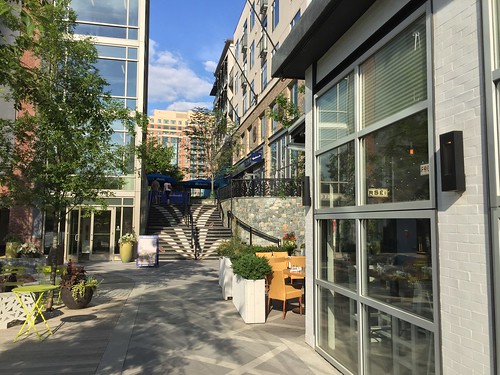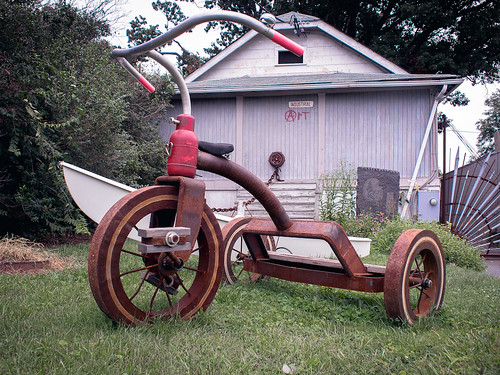With a recent court decision from a group of opponents delaying the Purple Line once again, it's easy to forget how many people support it, from local environmental groups to Governor Hogan. Let's remember why they fight for this project, and why it will get built one day.
The Purple Line will be a 16-mile light rail line between Bethesda and New Carrollton. It'll connect three Metro lines, all three MARC commuter rail lines, and Amtrak, as well as hundreds of local bus routes. It'll serve two of the region's biggest job centers, Bethesda and Silver Spring, as well as Maryland's flagship university. It'll give Montgomery and Prince George's counties a fast, reliable alternative to current bus service and Beltway traffic.
However, it'll do a lot more than that.
1) It'll make walking and bicycling a lot easier and safer. The Purple Line project includes rebuilding or extending trails across Montgomery and Prince George's counties, building on the area's growing bike network.
The Capital Crescent Trail, which ends two miles outside of Silver Spring, will get fully paved and extended to the Silver Spring Metro station, where it'll connect to the Metropolitan Branch Trail. The trail will get a new bridge at Connecticut Avenue and new underpasses at Jones Bridge Road, and 16th Street, so trail users won't have to cross those busy streets.
 |
| This will get built. Image from Montgomery County. |
The Purple Line will be a 16-mile light rail line between Bethesda and New Carrollton. It'll connect three Metro lines, all three MARC commuter rail lines, and Amtrak, as well as hundreds of local bus routes. It'll serve two of the region's biggest job centers, Bethesda and Silver Spring, as well as Maryland's flagship university. It'll give Montgomery and Prince George's counties a fast, reliable alternative to current bus service and Beltway traffic.
However, it'll do a lot more than that.
1) It'll make walking and bicycling a lot easier and safer. The Purple Line project includes rebuilding or extending trails across Montgomery and Prince George's counties, building on the area's growing bike network.
The Capital Crescent Trail, which ends two miles outside of Silver Spring, will get fully paved and extended to the Silver Spring Metro station, where it'll connect to the Metropolitan Branch Trail. The trail will get a new bridge at Connecticut Avenue and new underpasses at Jones Bridge Road, and 16th Street, so trail users won't have to cross those busy streets.



